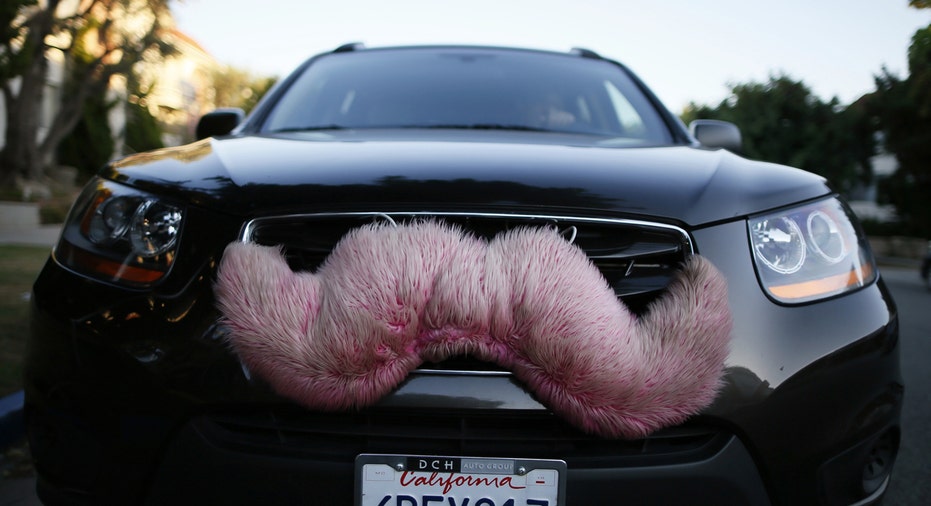Auto Insurers Chase an Elusive Motorist: The Uber Driver

Hundreds of thousands of drivers who pick up passengers for Uber Technologies Inc. and Lyft Inc. are frustrating a push by big insurers to sell new ride-sharing plans.
Firms including Allstate Corp. (NYSE:ALL) and Geico are eager to sell the plans, which are more specialized and typically more expensive than traditional auto policies.
But many motorists are unsure about the extent of their current coverage, confused about their options or unwilling to pay beyond what is legally required, according to insurance executives, analysts and drivers. Ride-sharing drivers aren't legally obligated to pay for anything beyond personal auto insurance.
"I just want to get the legal amount that I need and also spend as little as possible," said Cody Carlos Rodriguez, a graduate student in Honolulu who hasn't told his insurance company he uses his 2005 Kia Sedona minivan for business because he hasn't been asked. He said he drives for Uber about 20 hours a week.
These plans are designed to fill insurance gaps that could affect drivers and their vehicles. Traditional auto policies won't provide coverage during the periods a driver is providing transportation services for pay, and polices provided by ride-sharing companies aren't always as comprehensive as a driver's own plan.
Ride-share drivers pose higher risks than typical drivers, insurers say, because they might drive more miles and spend time in busy or unfamiliar neighborhoods.
The first ride-sharing apps launched in 2012, but most insurers didn't begin offering policies tailored for ride-sharing drivers until 2015 or last year. In February 2016, less than 15% of ride-sharing drivers surveyed by website NerdWallet and startup SherpaShare had purchased additional insurance.
The effort to create a new insurance market among part-time professional motorists is a reflection of how fast ride-sharing is taking hold five years after the first smartphone apps launched. Lyft had 700,000 drivers by the end of 2016, double the level from a year before. Uber has 600,000 drivers in the U.S. Most drivers work part-time, both companies said.
Ride-sharing insurance poses an immediate opportunity for auto insurers that have struggled in recent years with rising losses from car crashes. But analysts say changes in transportation technology threaten these insurers in the long run. As ride-sharing grows more popular, commuters might forgo owning cars, and eventually self-driving cars could make personal auto insurance much cheaper or unnecessary.
Taxis and ride-sharing vehicles could account for 26% of miles traveled globally in 2030, up from 4% in 2015, according to a 2016 Morgan Stanley (NYSE:MS) report.
Ride-sharing apps initially sparked a debate among insurers, ride-sharing companies, consumer advocates and public officials about who is ultimately responsible for all portions of a shared ride. One early point of contention was accountability for the moment when a driver has logged onto a ride-sharing app but hasn't yet agreed to pick up a passenger.
In 2013, a driver in San Francisco who was logged into Uber but not carrying a passenger struck and killed a 6-year-old girl and injured her mother and brother. Uber initially said the driver wasn't providing services on its system at the time of the accident. The girl's family sued Uber and advocated for policy changes. The case settled for an undisclosed amount in 2015.
Since 2013 laws have passed in 45 states and Washington that require ride-sharing companies to provide some coverage, and similar legislation is pending in Vermont, Connecticut, Florida, Alaska and Oregon, according to the Property Casualty Insurers Association of America. The legislation doesn't apply to New York City, which only allows commercially insured vehicles to pick up passengers. Commercial insurance can cost much more than personal insurance.
Ride-sharing companies now provide liability insurance and physical damage coverage after a driver has agreed to pick up a passenger and while that passenger is in the car. But they still don't offer coverage for damage to drivers' cars during that period before a passenger is assigned.
"Drivers may end up paying for damages out of pocket, especially if they're injured," said Stacey Gorsuch, an underwriting product manager at State Farm Mutual Automobile Insurance Co.
Deductibles are also higher than many drivers pay on their personal plans.
Drivers in most states can now buy ride-sharing endorsements that add extra coverage to their personal plans or "hybrid" policies that blend personal and commercial insurance. Last month, a startup named Slice Labs Inc. started testing an app to offer on-demand insurance for ride-sharing drivers.
"We had to create a policy that had never existed before," said Othello Powell, director of commercial lines at Geico, a subsidiary of Berkshire Hathaway Inc.
Even though drivers are often confused about what coverage applies during what periods, interest in these ride-sharing products is growing, insurance companies say. At Allstate, 65% of drivers who acknowledge working for a ride-sharing company buy extra insurance in the states that it is available, and the company has sold about 9,000 ride-sharing policies. The additional coverage costs $15 to $20 a year.



















